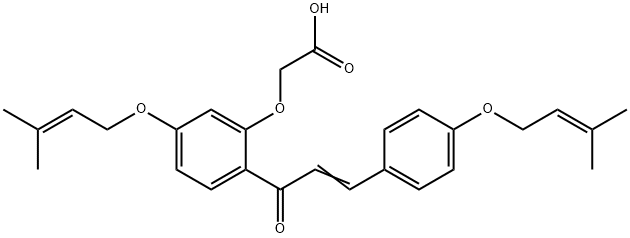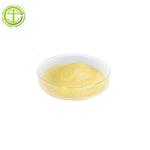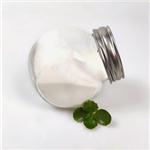Pharmacological action
Sofalcone is an effective component extracted and synthesized from traditional Chinese medicine Sophora tonkinensis. It is the product of isoprene derivatives. It can increase gastric blood flow, expand gastric mucosal blood vessels, increase oxygen consumption in gastric tissue, promote gastric mucosal repair, increase gastric wall composition and increase prostaglandin content in gastric tissue. Its mechanism is to inhibit prostaglandin 5hydroxyl prostaglandin dehydrogenase (PG). This product has a good effect on the ulcer of the digestive tract by enhancing the defense factor. It is mainly used for the treatment of gastric ulcer and gastritis.

Figure 1 Structural formula for sofalcone
Pharmacokinetics
This product is absorbed quickly after oral administration, and the concentration is up to the peak in about one hour. The half life of plasma is about 1h, and it will almost disappear in the blood after 2h. The main metabolites in the body are the reductive products of the alpha and beta unsaturated bonds of the chalcone skeleton, and the oxidation products of the isoprene side chain. It is excreted from urine by 6% to 8% in the form of isoprene chain oxidation products within 48h.
Description
Sofalcone is a synthetic antiulcer agent related to sophoradin, the active principle
of the Chinese medicinal plant, Sophora subprostata. It is suggested to act via a
strengthening of the mucosal barrier through an increase in blood flow and
stimulation of the synthesis of sulfated mucopolysaccharides.
Uses
Sofalcone is an anti-ulcer chalcone derivative. It blocks inflammation by suppressing the production of nitric oxide, TNF-α, and MCP-1 while inducing the expression of heme oxygenase-1 when used at 10-20 μM. Sofalcone (20-50 μM) induces VEGF expression in gastric epithelial cells and promotes gastric ulcer healing following eradication therapy for H. pylori.[Cayman Chemical]
Uses
Sofalcone is a substituted chalcone with anti-ulcer activity.
Definition
ChEBI: Sofalcone is a member of the class of chalcones that is benzene in which the hydrogens at positions 1,2 and 5 are replaced by carboxymethoxy, (1E)-1-{4-[(3-methylbut-2-en-1-yl)oxy]phenyl}-3-oxoprop-1-en-3-yl, and (3-methylbut-2-en-1-yl)oxy groups, respectively. It is a gastrointestinal drug currently used for treatment of gastritis and gastric ulcers in Japan and South Korea. It has a role as an anti-ulcer drug, a gastrointestinal drug, a plant metabolite and an antibacterial agent. It is an aromatic ether, a monocarboxylic acid and a member of chalcones.





